
Thursday, September 19, 2024
Florence Court Explains Second Knox Guilty Verdict For Criminal Slander #2
Posted by James Raper
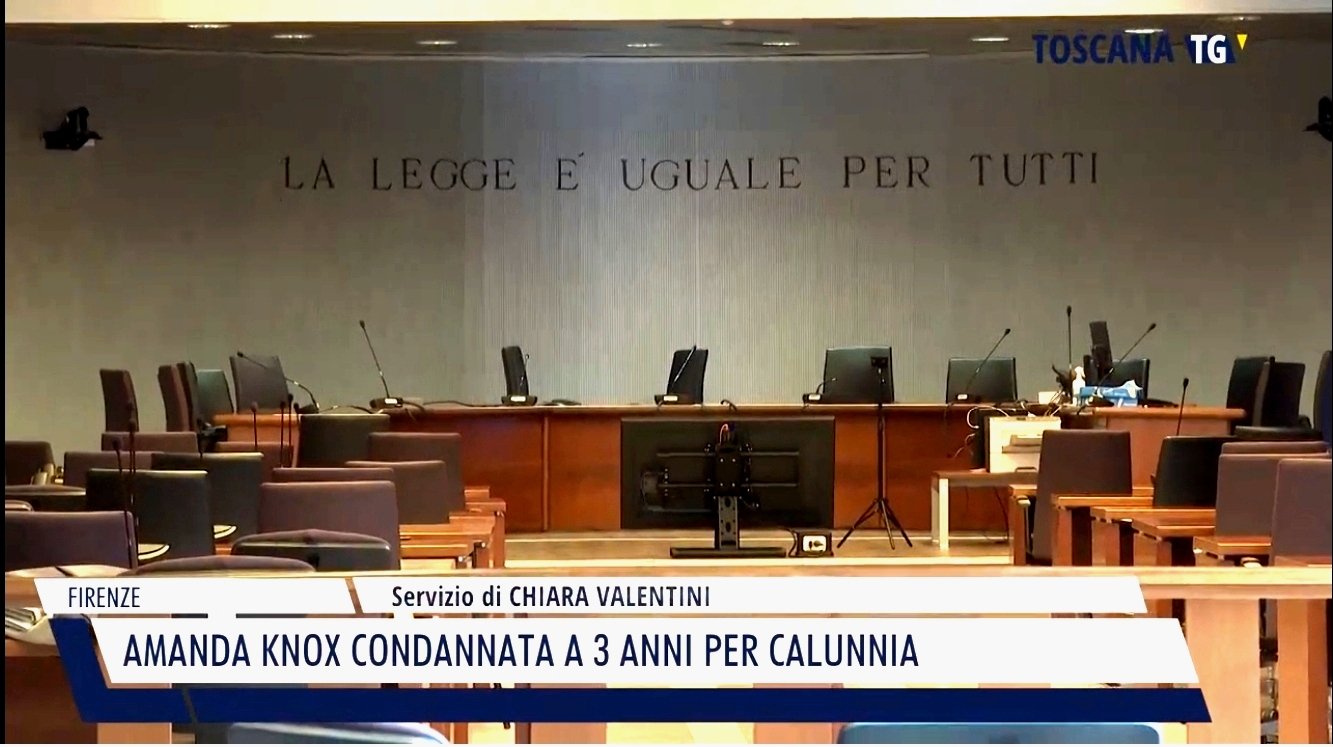
Sequential images all from courthouse; court was closed to press
Reflections
These are my reflections, as a lawyer, on the Motivation of the Florence Appeal Court re Amanda Knox’s conviction for criminal defamation of Patrick Lumumba
This appeal was heard in Florence before the presiding appeal judge Dr Anna Sacco and the reporting judge Angelo Grieco. The offence for which Knox was convicted was pursuant to Article 368 of the Italian Penal Code. It is worth stating the offence as follows –
Anyone who with a denunciation, complaint demand or request, even anonymously or under a false name, directs a judicial authority or other authority with an obligation to report, to blame someone for a crime who he knows is innocent, that is he fabricates evidence against someone, shall be punished with imprisonment from two to six years.
Knox had been convicted of the offence at trial in 2009 - where the evidence was that she had named Lumumba as Meredith’s murderer, effectively as a witness herself present in the cottage at the time - and then again on her first appeal before the Hellmann court in 2011, and then again on her final appeal to the 1st Chambers of the Supreme Court in 2013. Her conviction for the offence thus became definitive under Italian law.
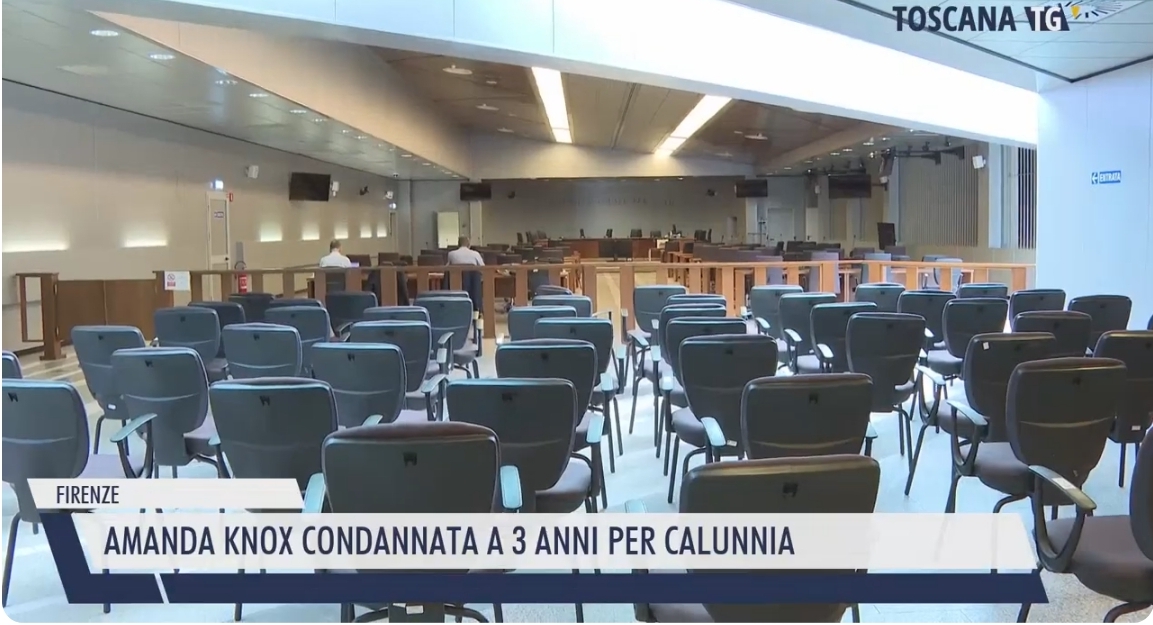
Why then did the Italian Supreme Court (in Italy it was reported that it was the 5th Chambers) refer the conviction to the Florence Appeal Court for a review? I have my suspicions as to the 5th Chambers’ motive for taking this step but a more charitable and legalistic view would be that it was a tidying up exercise pursuant to an alteration that had been made to Italian law by a Legislative Decree in October 2022.
The Florence Appeal Court refers to this in its Motivation. Basically, the Decree states that henceforth there must exist a framework in the Italian judicial system for implementing, in it’s domestic law, decisions at the European Court of Human Rights that go in favour of the applicant. As to what is meant by “implementing”, in the case in hand, it must be that such decisions by the ECHR have to be, and have to be shown to be, taken into account in achieving the final verdict. In the event the 5th Chambers excluded any discussion, let alone a critique, of these decisions, by declaring that they could not be challenged.
That ruling, however, does not apply to us.
I had not, until now, known anything about the terms of reference laid down by the 5th Chambers for the Florence Appeal Court, other than what could be gleaned from social (and the largely unreliable) media. Having now read the Motivation I now know, as the Appeal Court refers to them.
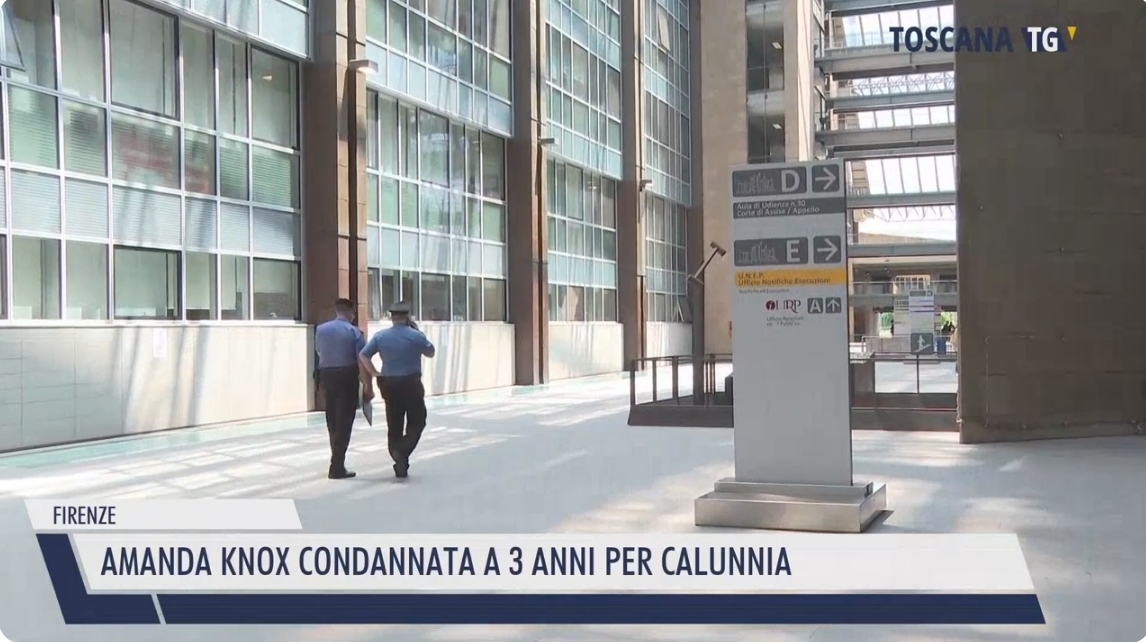
The ECHR had found three violations, or rather procedural infringements, in the case, and it was on this basis that the 5th Chambers had made the referral.
The first was to do with Knox’s treatment at the Questura on the night of the 5th/6th November. Although the ECHR dismissed the claim (under article 3 ) that she had been subjected to inhumane or degrading treatment, it did say that there should have been “an effective investigation” by law enforcement and the judicial system “to identify and punish possible perpetrators”. What was meant by this I am not entirely clear. It surely cannot mean the perpetrators of the murder. We are dealing with the defamation here so it must be a reference to the behaviour of the police oficers and whether this had a prejudicial impact on the offence that then occurred. But what would constitute an “effective investigation” other than a trial of the accused on the charge, with the hearing and cross-examination of witnesses etc, which is exactly what came to pass? What, exactly, would have been the point of an earlier, and presumably less rigorous, investigation conducted, presumably by the said perpetrators i.e the police, or at any rate by those institutionally biased in favour of them? This makes little to no sense at all to me.
The second infringement (or violation, whatever you prefer) was to do with Knox’s lack of legal representation. The ECHR had determined that Italy “had failed to demonstrate that the restriction of access to a lawyer had not irrepairably affected the fairness of the process as a whole”. This is taken by Knox supporters as a statement that the outcome (the verdict) had been irrepairably unfair, and accordingly the verdict should be squashed.
The statement, in one brief sentence, puts together, sequentially, as if one entailed the other, the bones of a premise and then a conclusion, even if the conclusion was not expressly stated. To my mind, there is no logical structure here such as would enable anyone to draw a valid conclusion from it. There is clearly something missing. The missing part (well it is there but cleverly hidden) is an assumption, or an additional premise that holds that “restriction of access to a lawyer is irrepairably unfair”. On the face of it that might also appear a reasonable proposition. So, insert that and then at least we have a logical argument, as follows –
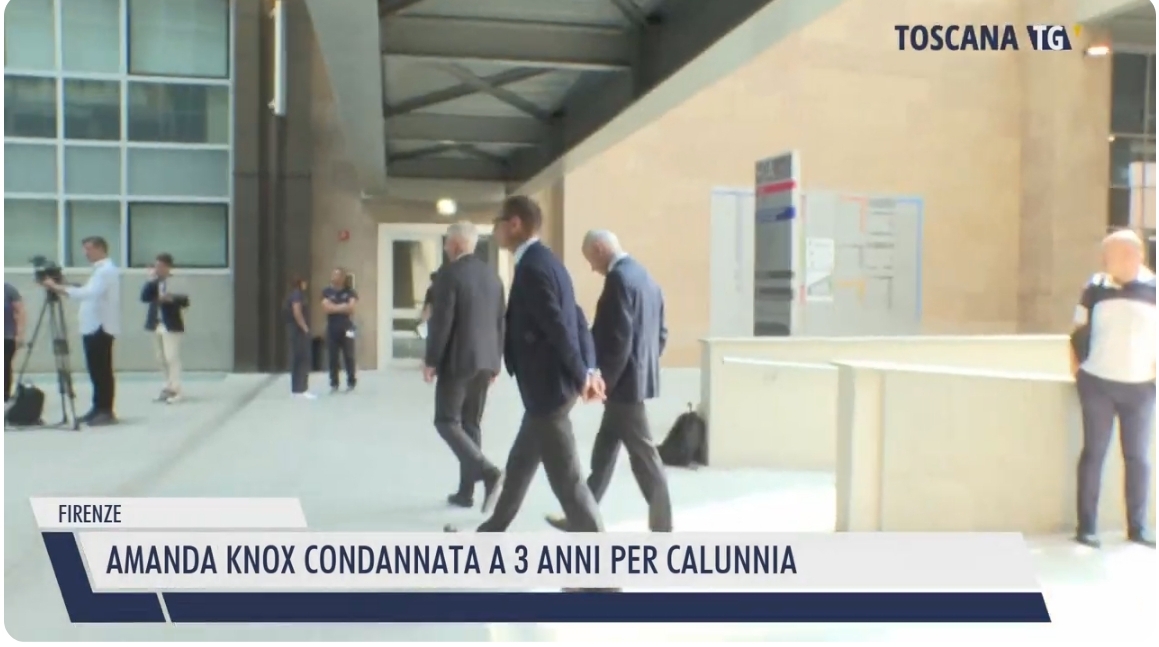
Restriction of access to a lawyer is irrepairably unfair
Italy failed to demonstrate otherwise
Therefore the “process” was irrepairably unfair
But the conclusion to even a seemingly valid logical argument can be unsound and the above, as it relates to the case in hand, is unsound.
For a logical argument to be sound the premises upon which it is built have to be established as true in the given circumstances. There is a reason for why the aforesaid premise is missing. It is both untrue, in the given circumstances, and highly loaded (the use of the word irrepairably!)
The assertion, as it stands, without the missing premise, is pure sophistry, and begging the question, the petitio principii fallacy. The concept of it being irrepairably unfair is as much a part of the premise as it is the conclusion , which the conclusion then expands to “the process as a whole”. Whether Italy did, or did not, fail to demonstrate otherwise is actually irrelevant as to whether what happened was fair or unfair.”
In fact it was the ECHR which had failed to demonstrate required truths. It had failed to demonstrate
(a) that Knox did have her access to a lawyer restricted. The only person who claims that this was so is, of course, Knox herself. Was the State under an obligation, in the circumstances, to ensure that she had a lawyer whether or not she wanted one? It seems to be only in retrospect that she says she did want one.
(b) that her untrue accusation against Lumumba was in fact connected to and part of, that is that it arose from an unfair “process as a whole”, whatever that means, but let us restrict it to the absence of a lawyer in this instance. Without this the logical argument is meaningless in so far as it relates to the matter in hand.
(d) that, and of course this is the crux of the matter, restriction of access to a lawyer was, in the circumstances, unfair and, indeed, irrepairably unfair.
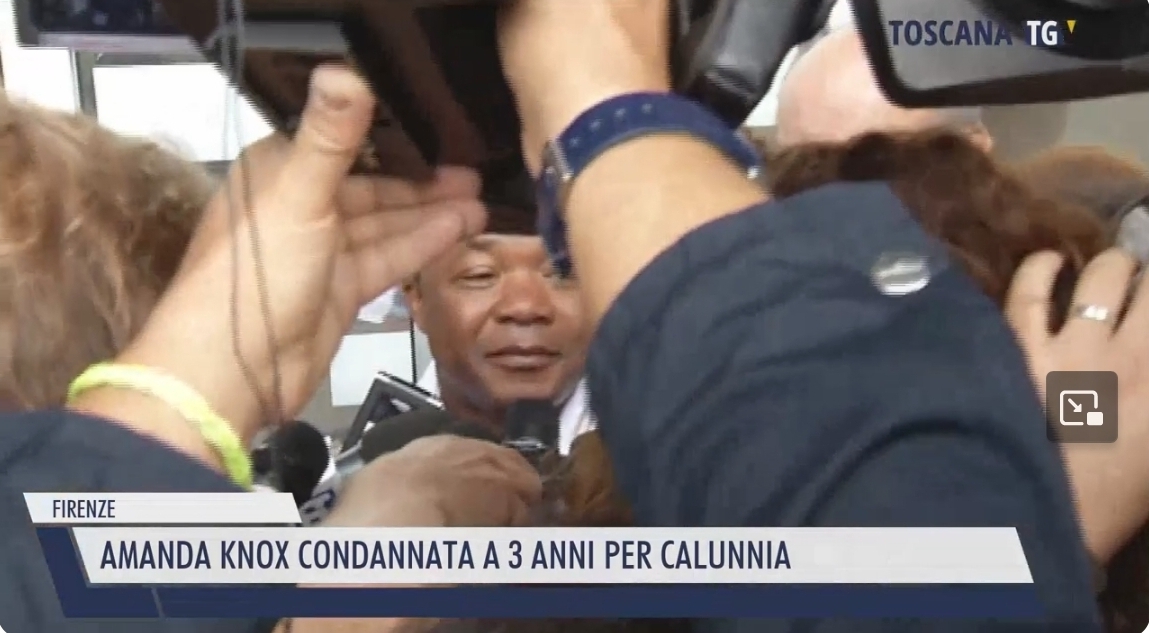
Whether it, and the other two procedural infringements, were unfair, let alone in the case of the absence of a lawyer, irrepairably unfair, and had a material and substantive adverse impact upon the safety of the conviction for slander, the ECHR did not attempt to establish as it would under the terms of Italy’s treaty obligations as to the Convention have to be a matter for an Italian trial court to investigate and rule upon, in accordance with the law and on the evidence before it.
The ECHR would know that, and that it was a matter more appropriate for an Italian court but now with regard to the concerns the ECHR had expressed. Indeed I see the above statement as being little more than saying that. Had it been more than that, and had it been within it’s remit, then the ECHR could have, but did not, declare, in unmistakable language, that the lack of legal representation, and the other two infringements, in the precise circumstances at the time, was unfair, and impacted on what happened next – with a precise explanation as to why it so held. That it did not speaks to an understanding on it’s part that it was not competent to the task and that the task was beyond it’s remit and the generalities of Human Rights Law.
As far as Italian law itself is concerned we have (in so far as relevant) Article 63 of the Italian Procedure Code. This states that if a person who is not accused or a suspect makes self incriminatory statements to the criminal police, then the proceedings must be terminated and the accused/suspect warned that investigations may be carried out on him and that he should appoint a lawyer. If the person should have been heard as an accused or suspect from the beginning his statements shall not be used. Nothing unfair in any of that.
It is, of course, arguable that Knox had made herself a suspect when she declined to co-operate with the police over the exchange of texts with Lumumba, but even so surely only as a suspect in the murder case or, at the least, suspected of withholding information in relation to that investigation, not that she had made any self-incriminatory statements up to then, or prior to the slander of Lumumba. Actually, I would go further and say that she should already have been a suspect due to Sollecito’s prior dismissal of her alibi. However, at no stage could she have been a suspect for the offence which she then committed. One cannot be a suspect for an offence that has not yet occurred. However at the point when that did occur, Article 63 would apply. Although it is difficult for me to see how that would have assisted Knox, perhaps it played into the 5th Chambers terms of referral which excluded the Appeal Court from giving any consideration to the 1.45 and 5.45 statements that Knox signed, contrary to the ruling by Gemelli at the Supreme Court in 2008 which held them to be admissable in respect of the charge of slander only.
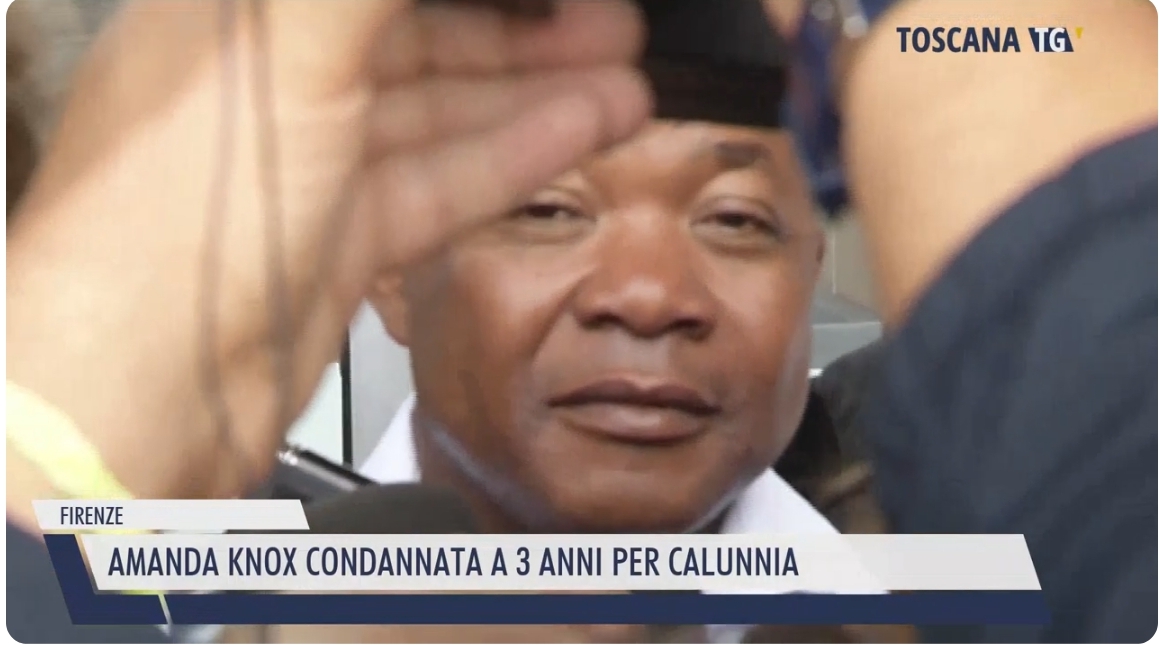
To be fair to the ECHR neither the trial court nor any subsequent court actually addressed the obligations imposed upon Italy by the Convention on Human Rights in their respective Motivations confirming the convictions for slander, and had they done so then perhaps that would have gone some way to mollifying the ECHR. But that is not to say that, as judges, they had not done so. A beneficial by-product of the Legislative Decree may well be that in future judges will deal have to do so to avoid being thus ensnared.
The third infringement was that the Interpreter had been too familiar with Knox and had led her on to believe that she had amnesia. This, to some extant, actually accords with the testimony of Anna Donnino.
In short, according to the 5th Chambers, these infringements may have been procedural but they had a “decisive impact (here the 5th Chambers, in the rather dogmatic and pre-emptive fashion with which we have become familiar, enters on the merit following on from a definitive verdict with which it had previously agreed) on the very moment of (Knox) making the slanderous accusations in the 1.45 and 5.45 statements.” The ECHR had not said as much. The statements therefore had to be removed, the 5th Chambers ruled, declaring that only it had an interface with the ECHR and thus be able to interpret it’s rulings! The Appeal Court, in it’s Motivation, refers to this as a “peremptory” ruling, hardly bothering to hide it’s disgust with it.
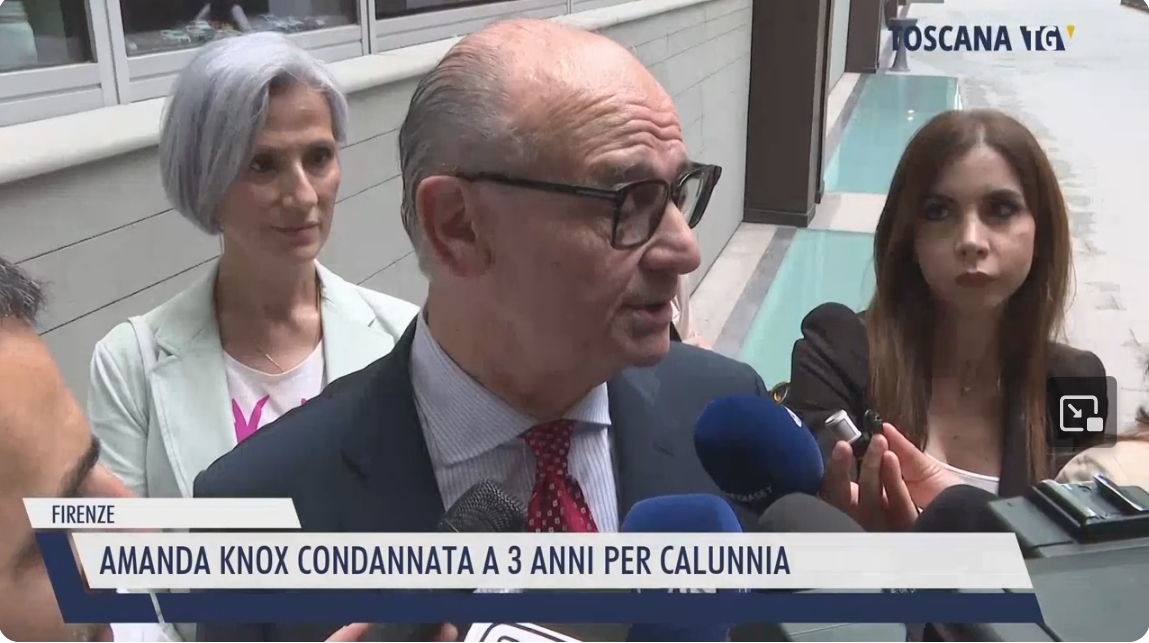
However the Appeal Court also pretty much has it’s hands tied by the effect of Article 628 which states –
“In any event a verdict (in this case the annulment of the conviction for slander) issued by a court following a Cassation [Supreme Court] order of remand may be appealed only on reasons that do not concern those that had already been decided by Cassation on the order of remand….” As it was the 5th Chambers which issued the verdict and order of remand this has the hallmark of a self entitled student being allowed to mark his own work! Nevertheless the Court of Appeal had to be careful and not fall into the trap laid for it.
What we are left with, thanks to the 5th Chamber’s (nudge, nudge, wink, wink) interface with the ECHR is the Memorial. The Memorial (the 5th Chambers said) remained to be assessed as it could not be said that it was impacted by the aforesaid infringements.
The 5th Chambers went on to say that there were 2 unanswered questions in this respect. I have to paraphrase what these were as the Motivation is a bit obtuse at this point, but they come straight out of the same playbook used by the 5th Chambers in acquitting Knox and Sollecito in 2015.
1. Does the content of the Memorial imply the existence and content of the slanderous statements at 1.45 and 5.45? This looks to me pretty much like a trap for the Appeal Court.
2. Is the Memorial to be taken as a retraction or confirmation of the slander?
Entry in to the merit was provided for by the Legislative Decree but that was not for the Supreme Court at this stage. Hence the referral. However we have to worry that the matter might come back to the 5th Chambers on appeal.

In the final analysis the terms of referral for the Appeal Court was that it “had to determine whether, in the light of the false evidence, the Memorial written by Knox contained statements accusatory against Lumumba made in the knowledge of his innocence, such as to uphold the guilty verdict at 1st instance”.
The Appeal Court took into account the submissions of interested parties.
According to Knox’s defence the Memorial was nothing more than a dreamlike account of fragments of a nightmare that Knox doubted had any connection to reality; flashes of blurred images etc. Furthermore, the police had already formed an investigative hypothesis of Lumumba’s involvement in the murder given that his detention was authorised (at the same time as Knox’s) at 8.30 am on the 6th, which was well before Knox (at around 13.00 hours) asked for paper on which to write her Memorial. Thus it was not the Memorial that instigated his arrest! No, it was plainly Knox’s earlier accusations. It is all really rather Fawlty Towers, isn’t it? Think Basil Fawlty and “Don’t mention the war!” when some germans come to stay at his Guest House. Here it is don’t mention the statements at 1.45 and 5.45! Also the language of the Memorial fell short of the necessary intent to commit the crime. I will come to how the Court of Appeal dealt with these submissions shortly.
Of course, in addition to the Memorial there is Knox’s letter of the 7th November which is likewise unimpacted by the aforesaid infringements.
The Appeal Court went through both documents with a fine tooth comb.
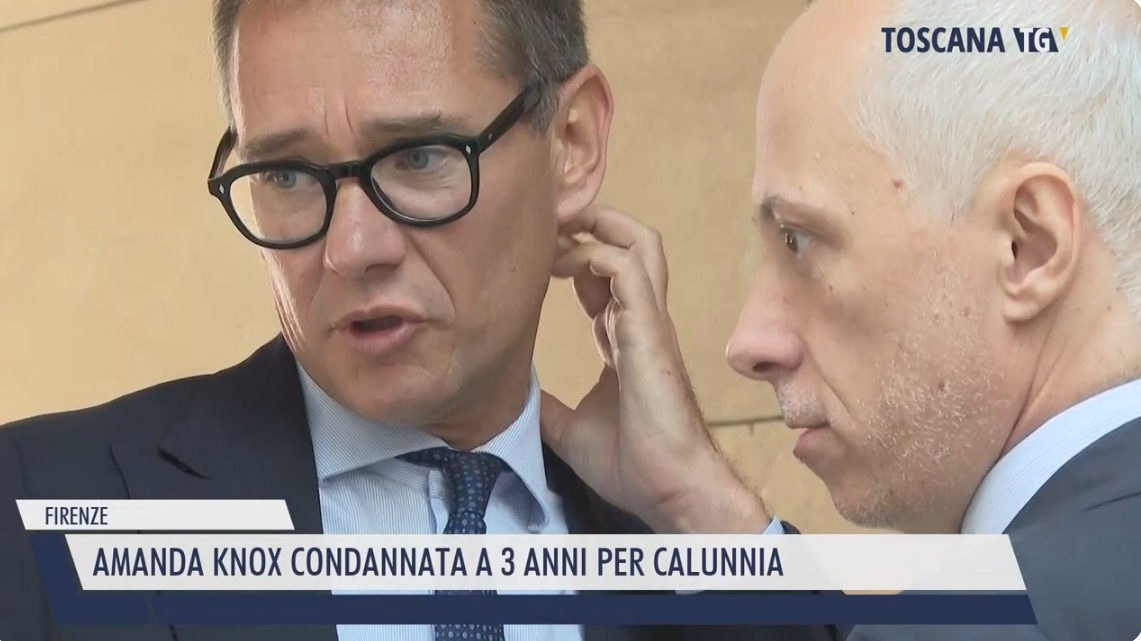
The Appeal Court also listed the submissions on the part of Lumumba. In my opinion it was rather clever in doing this as the effect was to destroy much of the subversive agenda that lay hidden in the 5th Chamber’s terms of referral all the while avoiding any charge that the Court of Appeal was itself challenging those terms. Indeed the Court of Appeal disposed of a number of these submissions in a manner making it clear that it had fully got the message from the 5th Chambers.
One of the Lumumba defence submissions was that, taking into account the first infringement mentioned by the ECHR, there needed to be a Review of Procedure hearing. That was not accepted by the Court of Appeal as it was not in the terms of referral it had received. In any event we can mention here, be it not menioned by the Court of Appeal itself, the following remark by the 5th Chambers in 2015 –
“And also, a possible decision of the European Court in favour of Ms Knox, in the sense of a desired recognition of non-orthodox treatment of her by investigators, could not in any way affect the final verdict, not even in the event of a possible review of the verdict, considering the slanderous accusations that the accused produced against Lumumba consequent to the asserted coercions, and confirmed by her before the Public Minister during the subsequent session, in a context which, institutionally, is immune from anomalous psychological pressures; and also confirmed in her Memorial, at a moment when the same accuser was alone with herself and her conscience in conditions of objective peacefulness, sheltered from environmental influence; and were even restated, after some time, during the validation of the arrest of Lumumba, before the investigating judge in charge.”
Another was that in the Memorial, which was, indeed the crux of the referral, Knox had specifically mentioned her earlier statements – “and I stand by my statements that I made last night” - and thus it was clear from this that she had full recall of their content, and stood by it. The Court of Appeal did not fall into the trap, but re-iterating this submission in the Motivation speaks for itself.
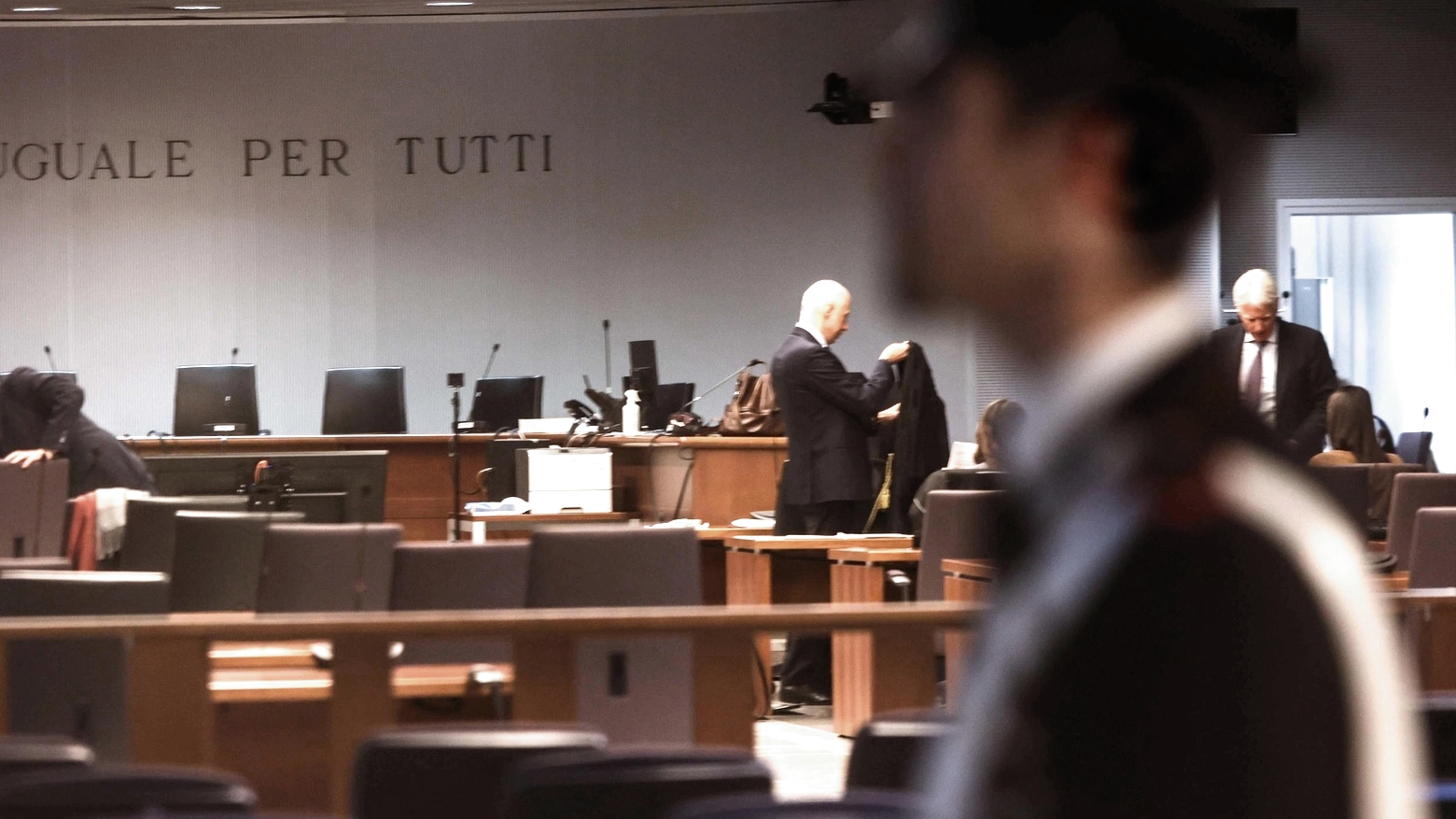
Another, in aid of the foregoing, was Knox’s letter of the 7th November, in which Knox claimed that she had not lied and stated that “I really thought he was the murderer”. In addition, Amanda Marie Knox, at the hearing on 8 November 2007 validating the arrest before the Judge for preliminary investigations, had made use of the power not to reply and, therefore, neither at that meeting nor at any time thereafter had she or her lawyers represented to the investigators the innocence of Diya Lumumba, and yet that she was already perfectly aware of her guilt as to the slander is apparent from the content of her conversations with her mother, and then both parents together, in prison.
Turning to the Knox defence submission that a proper interpretation of the Memorial was that it contained a retraction of the accusatory statements, the Court of Appeal was of the firm view that this was not acceptable.
The Court of Appeal said – “the incidental reference in the grounds of the judgment of the ECHR to the content of the Memorial, in the sense of the alleged retraction of the statements previously made by Amanda Marie Knox, in that case evidently inferred from the interpretation given by the Court of Assizes of Appeal of Perugia in the judgment of 3 October 2011 (Hellmann, annulled by the ruling of the Court of Cassation), is therefore not relevant for the assessment of the substance to be carried out in this case. It follows that the defense, which seeks to give the judgment of the European Court of Human Rights of 24 January 2019 a broader scope than the actual one, which also extends to a binding interpretation of the substance of Knox’s Memorial of 6 November 2007, going beyond the provisions of the judgement of the Court of Cassation of 12 October 2023 (annulling the conviction and setting out the terms of referral), is therefore unfounded.”
On the Knox submission that the Memorial contained nothing but the fragments of a nightmare dimly remembered, the Court of Appeal considered whether there could be any reasonable doubt as to Knox’s ability to distinguish between reality and unreality and, indeed, whether this was relevant to the issue in hand. It was not just a case of having flashes of blurred images as Knox herself had referred to them as flashbacks –
“In the flashbacks I’m having I see Patrick as the killer, but the way the truth appears in my mind……. there’s no way for me to tell you, because I don’t remember for sure if I was at the house that night.”

The Court of Appeal, referring to Case Law, stated that doubt is only relevant to the material element of an accusation if that element does not have the character of seriousness, or is absurd, unlikely or grotesque. Even then, doubt is irrelevant if the accuser is aware of the innocence of the slandered person.
“The case law has long made it clear that the crime of slander is supplemented even if the criminal liability of a third party is maliciously put forward in doubt, provided that the complainant is aware of the innocence of those who are indicated as possible offenders.”
Logic comes into play here because if she was there, as she was definitively held to be by the 5th Chambers upon her acquital, then she must have been aware of Lumumba’s innocence and even if she was not then she must have been aware that she was fabricating evidence against him.
Furthermore the dream theme pushed by her defence is contradicted by the thread of the circumstances related by her flashbacks. Meeting Lumumba on the basketball court, then with him at the door to the house, then she curled up in the kitchen with her hands over her ears as Meredith screamed. That screaming was heard by witnesses but not suggested to her by Mignini or anybody else. Such a thread with evidential elements in support, is inconsistent with the disassociated fragments of a nightmare.

“The indication of Lumumba as the perpetrator of the murder is explicit and precise in the Memorial, written by the defendant autonomously and in solitude, in her own language and in her own hand”, the Court of Appeal held.
On the matter of intent, again this is irrelevant.
“According to the settled case-law of the Court of Cassation, slander is a crime of danger. The question to be assessed is whether, in the present case, Knox’s conduct was liable to create a risk of criminal proceedings being initiated, a requirement which can be regarded as inadequate only where the false accusation has a purpose which is manifestly and prima facie unlikely or incredible by reason of the circumstances in which it was carried out, the manner in which it was expressed or the absolute unreliability of its content, so that a finding that it is unfounded does not require any investigation. Only in such cases can the action be regarded as lacking the ability to harm the interests protected by the offending rule and constitute a criminal offense impossible under Article 49 cod. pen.
On the other hand, for the offence of slander to be capable of being characterized, it is only necessary that the false accusation contains in itself the necessary and sufficient information for the initiation of criminal proceedings against a person who is unequivocally and easily identifiable, as was certainly the case - even nominally and documentally - in the present case.”
By and large I think this is a well argued Motivation, it covers all the basic points and does nothing to put itself at odds with it’s terms of referral. It established, despite the bizarre exclusion of the signed statements, that the conviction was sound. I had not expected otherwise from a panel of reasonable and intelligent judges. It was always a slam dunk case.
I am not sure about this but I believe that Knox has been given 6o days in which to lodge an appeal, that is until the 8th October.
Comments
Awesomely deep. I am reading it for the fourth time. Thoughts in due course. There will be a test… 😊
I really would like to see it put into Italian (and James’s book) and posted at least on our Italian page - which is not huge but pretty damning and gets okay traffic at peak times.
Oddly we know more about the case than almost anyone in Italy, the bloodmoney Knox PR was never beamed over there, and our Wiki is totally unique. Virtually no American media has ever translated even one doc, even though eg AP and the NY Times have carried over 100 erratic reports.
James (and Krissy in previous post) touches repeatedly on system issues. Systems not optimised or thrown for a loop. Italy’s law enforcement is on the whole pretty impervious due to justice reforms post WW2 and again in the 1990s. The calunnia law pushes back on a smearing tactic of the mafias from around 2000.
It took major corruption by both Knox & Sollecito forces starting in 2010 to get Knox and Sollecito sprung late in 2011 and the 2015 Nencini guilty appeal overturned in 2015. And forces for honest justice did not take it lying down: Judges Hellman, Marasca, Bruno, and Boninsegna were all forced out. We once said that this was Meredith’s true legacy.
ECHR oversight is still a weak point. Because Italy allows two levels of appeal automatically for many crimes those appeals can look to eg ECHR paralegals like “No smoke without fire”. If they are going to issue advisories based only on documents they may need to read a lot more documents than they did in this case.
For example, not only was Knox not being interrogated on night of arrest, even Knox’s own lawyers conceded this at trial. And yet ECHR still reflect the Knox lawyers’ wild claims in their submission which included a threatening interrogation.
ECHR system change? Send such defense submissions immediately back to the Ministries of Justice for reaction. It took several years for prosecutors to see that submission and to find out how wild and untruthful the Knox lawyers had been. The cat was out of the bag by that point.
Uh, before James and Krissy leap up and down on me, and say such system change ain’t going to happen, let me leap in and say: Such system change ain’t going to happen.
The reason? ECHR keeps submissions of abuse pretty close to the chest. They dont want any reprisals against the submitters.
So ECHR staff are much of the time trying to figure out if there is dishonesty on their own.
But Italy is unique in its massive number of “appeals” to the ECHR and way too often, as here, there actually IS dishonesty.
The ECHR paralegals dropped the ball on key documentation (much of it translated here before ECHR ruled), and thus allowed Knox’s money-hungry lawyer to get his nose under the tent in a nuisance kind of way.
Where next:
Click here to return to The Top Of The Front PageOr to previous entry Florence Court Explains Second Knox Guilty Verdict For Criminal Slander #1

